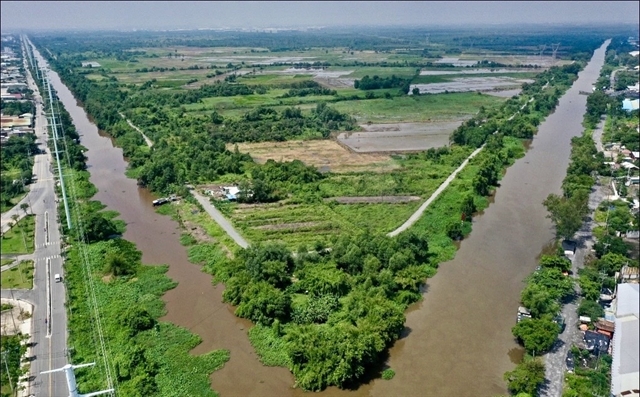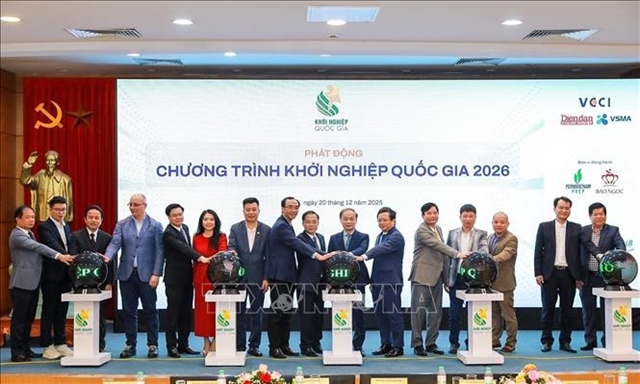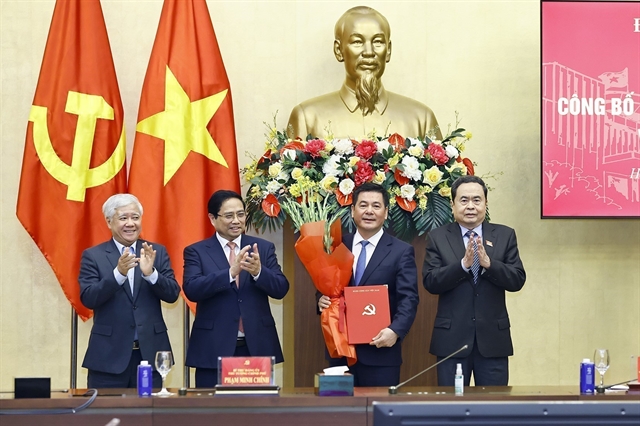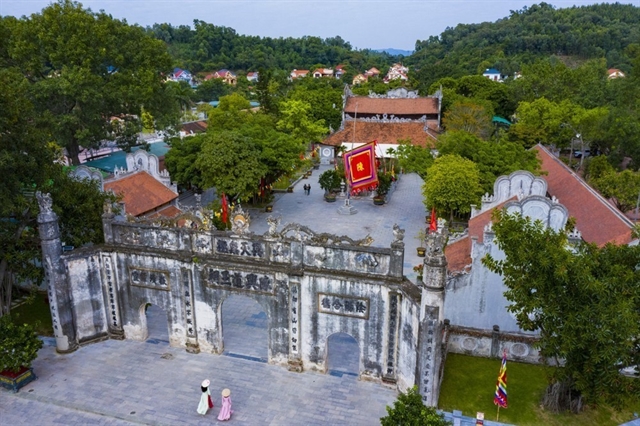 Society
Society

 |
| Minister of Trade and Export Development, Government of Saskatchewan, Warren Kaeding, speaks at the forum on Monday. — VNS Photo Lê Việt Dũng |
HÀ NỘI — Saskatchewan has invested significant time and resources in Asia as the province sees substantial opportunities for mutual benefit, according to the Minister of Trade and Export Development in the Canadian province, Warren Kaeding.
The minister was speaking on Monday's Doing Business with Saskatchewan Forum in Hà Nội.
Kaeding highlighted Saskatchewan’s US$10.1 billion in exports to Asia in 2024, driven by top commodities such as canola, potash, wheat and lentils.
The province has expanded its presence with trade offices in Việt Nam, China, India, Japan and Singapore, reinforcing its long-term commitment to the Asian markets.
Saskatchewan boasts the world’s largest potash reserves and top-tier uranium deposits, crucial for green energy. It also hosts cutting-edge facilities such as the Vaccine and Infectious Disease Organization, the world's largest carbon capture project, and nuclear research initiatives.
The Saskatchewan Research Council is advancing rare earth element processing and micro nuclear reactor development, while institutions such as the Canadian Light Source and the University of Saskatchewan strengthen global research collaboration.
With a diversified economy spanning traditional and renewable energy, Saskatchewan aims to attract global investment in agri-science, energy and sustainable technologies.
"As one of the world's strongest agri-science and energy ecosystems, we are committed to cutting edge innovation that will develop endless opportunities for investors and researchers alike," said the minister.
The Managing Director of the Saskatchewan Vietnam Office, Ha Nguyen, noted that Saskatchewan is experiencing record economic and population growth, with a diverse economy spanning agriculture, mining, oil and gas and advanced research sectors.
Saskatchewan’s exports to Việt Nam surged by 41 per cent last year, driven by key commodities such as wheat, potash fertiliser and pulses.
The province also boasts significant untapped potential in base metals and critical minerals. Aiming to capture 10 per cent of the global helium market by 2030, Saskatchewan has introduced a helium action plan to develop its sustainable reserves.
Nguyen emphasised Saskatchewan’s robust research and innovation ecosystem, which includes Innovation Place, one of North America’s top research parks and the Saskatchewan Research Council, Canada’s second-largest research organisation.
Saskatchewan also offers competitive business incentives, a well-developed transport infrastructure, and a growing immigrant community, enhancing its attractiveness for investment and settlement.
"We have the Saskatchewan Commercial Innovation Incentive, which is the first of its kind in North America to qualify all types of intellectual property for a 6-per-cent R&D tax credit," said Nguyen.
Director of Trade and Value Added Branch, Saskatchewan Ministry of Agriculture, Stephen Norgate said agriculture contributes 10 per cent to Saskatchewan’s GDP and employs nearly 37,000 people.
In 2023, the province exported $20.2 billion in agri-food products, accounting for 20 per cent of Canada’s total agri-food trade.
Norgate emphasised that Saskatchewan has set ambitious growth targets, aiming to increase its 10-year average crop production from 35 million to 45 million metric tonnes by 2030.
The government is investing in agricultural research, particularly in drought-resistant crops and extension services, to support these goals.
Livestock production is also a priority, with Saskatchewan housing Canada’s second-largest beef cattle herd and significant potential for expansion in beef, hogs, sheep and specialty livestock such as bison.
Canadian Western Agribition, Canada’s largest livestock show, plays a key role in Saskatchewan’s agricultural sector, attracting over 125,000 visitors and 1,200 international guests from more than 85 countries annually. The event serves as a global marketplace for high-quality cattle genetic sales and agribusiness opportunities.
He also underlined that the province’s agricultural practises have led to 15 per cent lower greenhouse gas emissions and 17 per cent less water use compared to 1981 levels.
"Recent research commissioned by the Global Institute for Food Security found Saskatchewan's net carbon footprint for many of the crops we grow is lower than competitive jurisdictions," said Norgate.
Minister Kaeding told Việt Nam News reporter Lê Việt Dũng that Saskatchewan recognises Việt Nam's value to its economy and that is the reason the province put a trade office in Việt Nam - one of the nine Sakasatchewan's international trade offices around the world.
"We have started with agricultural commodities and fertilisers, but we know there is so much more that we can trade with Việt Nam," said the Minister.
He cited long geographical distance as a trade barrier between the two parties, highlighting that decreasing freight costs is a key factor in promoting bilateral trade.
The minister also said Saskatchewan has a large deposit of high-quality uranium, has a high number of research facilities which are specialists in the nuclear power sector and hosts many nuclear energy companies.
The province is willing to share knowledge with Việt Nam across the field of nuclear power to help the country ensure energy security and reduce the dependency on coal and natural gas, he added. — VNS




